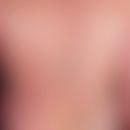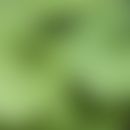Synonym(s)
DefinitionThis section has been translated automatically.
Anthocyanins (from Greek anthos = flower, kyaneos = dark blue) are water-soluble dyes found in plants, which are formed by almost all higher plants, but not by animals, microorganisms or water plants. They are responsible for the intensive red, violet or blue colouring of flowers, leaves and fruits. Anthocyanins are counted among the secondary plant substances.
Anthocyanins are glycosidic compounds (flavonoids) which are close to the yellow dyes of the flavone and flavonol groups and to catechins.
Anthocyanins are highly soluble in water; they owe their solubility in water to the glycosidically bound sugar content. Only the sugar-free part, the aglycone of the anthocyanin, is decisive for the colour. The aglycone is called anthocyanidin.
Pharmacodynamics (Effect)This section has been translated automatically.
Pharmacologically, anthocyanins inhibit the absorption of glucose and modulate postprandial glycemia. According to a meta-analysis, anthocyanins reduce total cholesterol and triglycerides in serum.
In mice, cyanidin-3-O-β-glucoside (C3G) has been shown to reduce oxidative stress and alleviate non-alcoholic steatohepatitis (Jiang X et al. 2014).
Delphinidin appears to exert an anti-inflammatory effect in vitro in psoriasis and psoriatic arthritis by inhibiting innate and adaptive IFNγ+ cells and T helper (Th)17 cells (Tsiogkas SG et al. 2022).
You might also be interested in
Field of application/useThis section has been translated automatically.
Exemplary and frequently occurring in nature are the glycosides of:
- Cyanine (cyanidin-3,5-O-diglucoside)
- chrysanthemine, curomanine (cyanidin-3-O-glucoside)
- Antirrhinin, keracyanin, prunicyanin, sambucin (cyanidin-3-O-rutinoside)
- Sambicyanin (cyanidin-3-O-sambubioside)
- Cyanidin-3-O-glycosides in elderberry
- Methyl ethers of cyanidin (peonidin and rosinidin) also occur naturally as glycosides.
- Peonidin, paeonidin
- Peonidin-3-O-glucoside
- rosinidin
Examples of various Anthycans and their occurrence in various plants:
- chokeberry(Aronia melanocarpa fructus), blackberry, poppy, rose, cranberry, elderberry, cornflower, cherries, red cabbage, sour cherries, (cyanidin)
- Eggplant (delphinidin)
- Strawberry (pelargonidin)
- Primula species and blue grapes, red wine (malvidin)
- Blackcurrant (delphinidin and peonidin)
- Petunia (petunidin)
- Red currant, golden balm, nasturtium (pelargonidin)
- Blueberry
Note(s)This section has been translated automatically.
In the higher plants anthocyanins occur alongside flavones, carotenoids, anthoxanthins and betalaines. They are responsible for the colouring of the leaves in autumn. Their colour comes into its own when photosynthesis is stopped and chlorophyll is no longer formed.
LiteratureThis section has been translated automatically.
- Castro-Acosta ML et al (2016) Berries and anthocyanins: promising functional food ingredients with postprandial glycaemia-lowering effects. Proc Nutr Soc 75:342-355.
- Jiang X et al. (2014) Cyanidin-3-O-β-glucoside protects primary mouse hepatocytes against high glucose-induced apoptosis by modulating mitochondrial dysfunction and the PI3K/Akt pathway. Biochem Pharmacol 90:135-144.
- Liu C et al. (2016) Effects of Anthocyanin on Serum Lipids in Dyslipidemia Patients: A Systematic Review and Meta-Analysis. PLoS One11(9):e0162089.
- Morais CA et al. (2015) Anthocyanins as inflammatory modulators and the role of the gut microbiota. J Nutr Biochem 33:1-7.
- Thompson K et al. (2016) Anthocyanins in obesity-associated thrombogenesis: a review of the potential mechanism of action. Food Funct 7:2169-2178.
- Tsiogkas SG et al (2022) Delphinidin diminishes in vitro interferon-γ and interleukin-17 producing cells in patients with psoriatic disease. Immunol Res 70:161-173.
- Zhang J et al (2019). Neuroprotective effects of anthocyanins and its major component cyanidin-3-O-glucoside (C3G) in the central nervous system: An outlined review. Eur J Pharmacol 858:172500.
- Zhu Y et al. (2016) The Effect of Anthocyanins on Blood Pressure: A PRISMA-Compliant Meta-Analysis of Randomized Clinical Trials. Medicine (Baltimore) 95:e3380.




